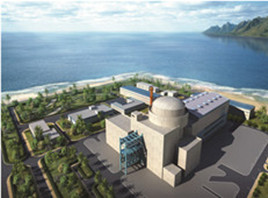Energy
During the 12th Five-Year Plan Period (2011-2015), Beijing worked hard to cut the use of coal, built clean energy facilities, and rapidly enhanced capacity of its energy resources. The city remarkably improved its performance in energy conservation and cut energy consumption, with the energy sector achieving safe and smooth operation. The implementation of a clean and efficient energy system provided strong support for sound economic and social development and continuous improvement of air quality in the capital.
1. Remarkable improvement in its energy mix
In the past five years, Beijing cut its coal consumption by nearly 14 million tons. The share of coal in its total energy consumption declined from 29.3% in 2010 to around 14%, while the proportion of natural gas and "greener" energy increased to about 86%. Datang Gaojing plant and other two coal-fired plants in the capital were shut down. The city applied clean energy solutions to coal-fired boilers worth 20,000 T/h and introduced alternative clean energy solutions to replace coal in 184,000 households. We have made the city's core area virtually coal-free, and retired most coal-fired boilers in the city proper's six districts as well as development zones at the municipal level or above.
2. Enhanced capacity to supply energy
On electricity, the city's installed generation capacity totaled 10,710 MW, its power receiving capability reached 17,000 MW and its reliability on power supply reached just over 99.9 percent.
Regarding gas, the city built the Shaan-Jing Line 3, the Tangshan LNG and the Datang coal gas projects to expand external gas supply. Its annual gas supply capacity totaled 41 billion m3.
With heating, we moved fast in building a "'1+4+N'+X" clean heating system featuring one stable central network, four gas-fired heating centers, supplementary N gas-fired peak boilers (the same as base load of thermal power stations) and X local independent heating systems. The floor space with heating reached 780 million m2 in the city, with 83.3% heated with clean energy.
3. Substantial increase in the use of renewable energy
Renewable energy utilized by the city in 2015 more than doubled that of 2010, accounting for 6.6% of total energy consumption. The city has begun to scale up its pilot and demonstration projects on renewable energy. On solar energy, Beijing has built a number of projects such as a 20 MW solar power station in Miyun and the first MW-level solar thermal power source in China. The installed generation capacity of solar power in the city totaled 0.165 GW. The city has also built a number of large geothermal power demonstration projects such as the Yanqing-Sanlihe deep geothermal energy project and the project to use residual heat from smoke and gas in Beijing Future Science Park. The floor space heated by geothermal power or heat pump totaled 50 million m2. In bio and wind energy, Beijing also built a number of projects such as the garbage power project in Lujiashan and the third phase of Guanting's wind farm. The city's installed generation capacity of wind power totaled 0.2 GW and that of bio-energy reached 0.1 GW. The capital also introduced policies to incentivize distributed solar energy use, provided subsidies for heat pumps, and further improved its policy system on renewable energy.
In the 13th Five-Year Plan period (2016-20), Beijing will adapt to the economic New Normal and new trends in energy revolution, focus on energy security and promote facility capacity, with building plans featuring multiple sources, multiple directions and multiple spots. It will also move fast in shifting energy by cutting coal consumption and encouraging renewable energy; promoting integrated and coordinated development of the diversity of energy sources through introducing modern and new energy technologies; and improve the energy market system by deepening the reform of energy systems and institutions. This will go on to provide sustainable, robust and reliable energy support for a world-class, harmonious and environmental city.

 Province Events
Province Events Major Events
Major Events Highlights
Highlights
